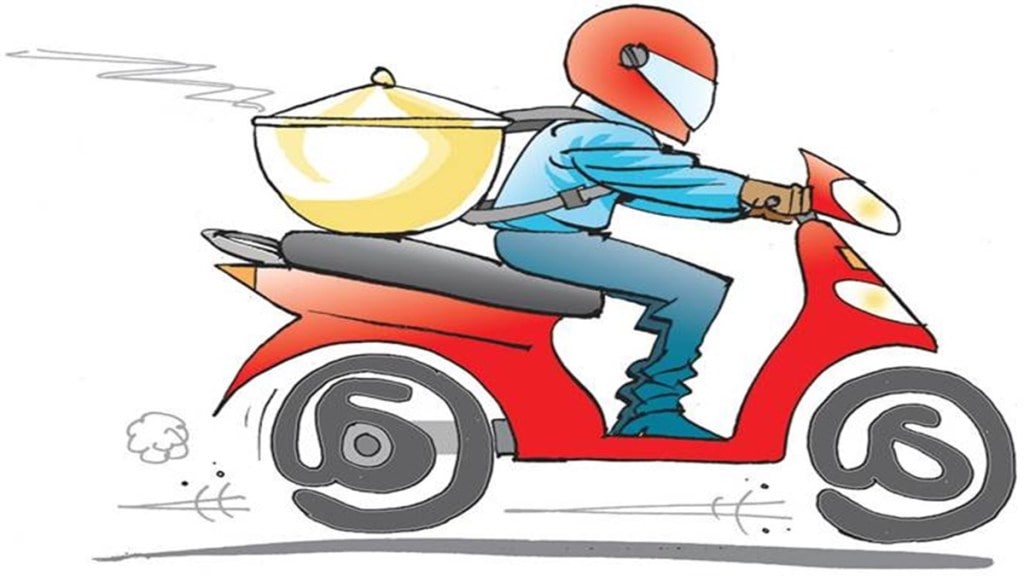By charging restaurants a commission of just 3%, compared with 25% or more levied by existing aggregators, foodtech platform Thrive is shaking up the food delivery market.
However, while Swiggy and Zomato operate as aggregators offering restaurant listing and food delivery as bundled offerings to eateries, Thrive is positioning itself as a disruptor with its online promotion, third-party logistics integration, and customer data sharing.
Co-founder Dhruv Dewan says he will not spend dollars on sales or marketing to attract new restaurants, but will instead depend on word of mouth and organic reach. Thrive helps in online promotion and offers third-party logistics integration through tie-ups with Wefast, Dunzo, Pidge, and Shadowfax alongside the software offering. Restaurant owners can choose to either pay the delivery cost themselves or pass it on to the customer.
Also Read: Swiggy CTO to leave company in May
Both Swiggy and Zomato offer unparalleled discoverability to new restaurants, making it difficult for new entrants to create a direct ordering funnel using technology and social media strategies. The challenge is to convince restaurant owners to move to SaaS enablers like Thrive that offer limited discoverability.
Dewan feels Thrive should not be seen as a challenger to the existing duopoly, but rather as a software enabler. “We are still at an early stage, and I think it’s wrong to compare us to Zomato or Swiggy, who are category creators. We are not trying to break a duopoly but to help evolve food delivery tech in the country… we’re trying to create an ecosystem where restaurant owners can work with us to generate orders, and use that order data to also create their own brand,” said Dewan.
Swiggy and Zomato together service more than 2.5 million orders a day with their fleets of delivery personnel. Thrive wants to change this by providing the core tech behind food delivery operations as a SaaS offering to restaurants, allowing them to have greater control over promotional offers, pricing, and discounts, rather than the platform setting these caps. This is a welcome change for restaurant owners who have struggled to identify loyal patrons due to the lack of data or insights into their customers when they order from Swiggy and Zomato.
Thrive’s pitch as a SaaS enabler for restaurants has attracted strategic investors from the food and beverages space, something which neither Swiggy nor Zomato has been able to do. Last week Thrive closed a fundraise from Coca-Cola India in exchange for 15% equity. Prior to this, Thrive also raised $2.5 million from Dominos India-owner Jubilant FoodWorks in exchange for 35% equity.
Also Read: After backlash, Zomato assures 10-minute delivery safe for partners
Restaurants, hit by the pandemic, depend largely on the two aggregators for revenues. Although dine-ins are picking up, both new and existing restaurants business are making a big chunk of their revenues from online delivery. Dewan told FE it has become extremely difficult to survive without food delivery aggregators. “Especially, if the restaurant owner is looking to create a large brand then in order to generate demand and visibility he will have to rely on third parties,” Dewan said.
With ThriveNow’s CRM-related solutions, restaurant owners can gain insights into its customer base, raw material usage, unit economics, and others to grow their businesses.
Each restaurant outlet on Thrive gets its own direct order link, and the owner of the restaurant can publicise the link on social media or through other mediums to gain leads. When Thrive first began its food delivery operations in late 2021, most companies adopting the direct order channel were premium or gourmet brands. But this is changing with more affordable brands on-boarding the platform.
“We launched in August 2021 with just 3,000 restaurant outlets, this has now grown to more than 14,000 currently across 80 cities. We have also completed more than 250,000 orders to date, processing a GMV of over Rs 30 crore for restaurants,” added Dewan.
“Even on the consumer-facing delivery app, we’ve been able to organically attract users without paying acquisition costs, and I think going forward it’s more of a chicken-and-egg problem for us. As we scale the consumer demand, we expect more restaurants to join us, and as more restaurants come in, we expect more consumers to sign up as well,” Dewan added.
The online food delivery sector in India is expected to grow rapidly at ~35% to ~$18B GMV and contribute ~18% of total food services by FY25, led by growth in users from 20 million to 60 million.
Currently, India has seven million branded restaurants, but the bigger market opportunity comes from the 23 million outlets in the unorganised segment, according to Federation of Hotel & Restaurant Associations of India.

